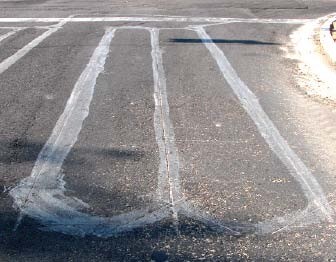A classic dilemma all motorcycle riders face at some point is that red traffic light that just won’t change. Most sensor-based traffic lights in the united states use magnetic induction loops to sense vehicles, and trigger the light to cycle. However motorcycles simply don’t have enough steel, and go unnoticed by the sensor until another motorcycle or car joins.
As another member recently shared, many riders have heard about using ultra powerful magnets to increase the chance that your bike can safely trigger traffic lights to change.

Unfortunately, this is a myth. Read on to understand why no amount of magnets make a difference.
TL;DR
- Loops are affected my ferromagnetic materials NOT magnetic material.
- Some magnets (neodymium) are ferromagnetic, but lack the magnetic permeability to have any influence.
The details
Firstly, let’s understand what is an induction loop, how these sensors work, and how they are used by traffic lights.
1) The lines you see in the road are low-frequency alternating current wires known as an inductive-loop.
2) Induction is the idea that electricity can induce magnetic fields, and magnetic field changes can induce electricity. Traffic lights are more specifically similar to a solenoid loop, because they depend on vehicles to actually act as the core.
“the core” is important, because we are not trying to induce current with a magnet – the loop is already electrified. We need to change the loops “inductance” (the property of an electric conductor or circuit that causes an electromotive force to be generated by a change in the current flowing)
You can read lots of scientific articles on how these loops work, but the take away is that we need ferromagnetic element with a magnetic permeability high-enough to resist becoming part of the magnetic field, and basically impeding it.
I’ve talked a lot about magnets, doesn’t sound like I disproved anything. BUt again we are not trying to create a magnetic field, we’re trying to “mess with” their magnetic field already created by the loop. To do that, we need a high permeability (measure of its ability to resist magnetic field).
It is true that some magnets like neodymium are also ferromagnetic, so why don’t they work?
Iron, the ferromagnetic material found in cars has a permeability of 2.5×10−1 (0.25) where as the permeability of ultra-powerful neodymium magnets is 1.32×10−6 (only 0.00000132). So you would need a neodymium magnet about 200,000x the amount of iron found in a car!
So you’re actually better off to strap some extra iron to your bike than any amount of magnets.
Don’t trust me, that’s fine, it’s been debunked elsewhere: